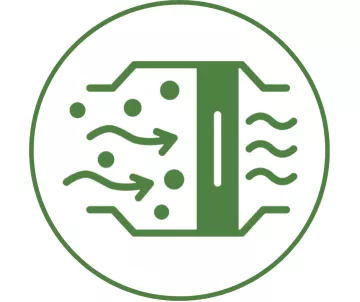Tidal wetlands perform functions that are crucial to the health of the Bay and provide services that benefit ourselves and our communities. Tidal wetland ecosystems improve water quality, recycle nutrients, draw down and store atmospheric carbon (carbon sequestration) thus helping us to slowdown climate change. Learn more.

Carbon Sequestration
Tidal marshes help to mitigate climate change by storing atmospheric carbon dioxide. These natural shoreline assets sequester carbon at a rate as much as ten times that of tropical forest!

Flood Retention
Tidal marshes and wetlands act as natural buffers, mitigating the impacts of storm surges and reducing the risk of coastal flooding. Marshes and vegetation along the shoreline also absorb and slow down rainwater, minimizing the potential for flash floods.

Temperature Regulation
Wetlands are critical to regulating temperature especially in a rapidly changing climate. In cold winter months wetlands give off warmth while in hot summer months they have cooling effects. Areas with significant wetlands may experience a cooling effect of 1-3 degrees celsius during summer months. Wetlands can help buffer the worst impacts of climate change related to heat for nearby communities.

Pollution Filtration
The SF Bay’s shoreline ecosystems contribute to the natural remediation of pollutants by recycling nutrients and filtering pollutants from urban runoff, improving water quality and preventing contaminants from reaching the Bay.